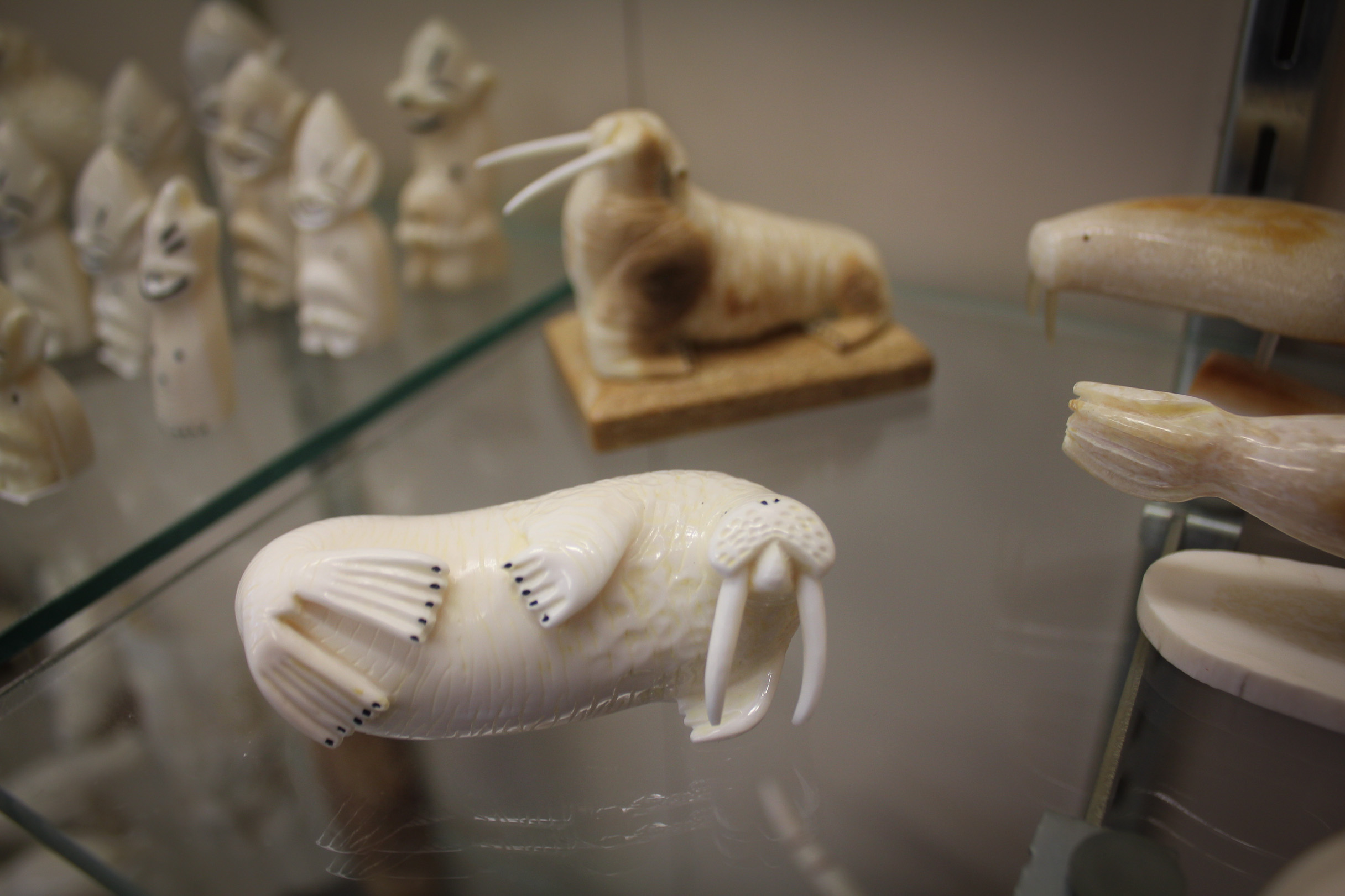Alaska’s lone U.S. Congressman and Senators have introduced legislation in the House and Senate to preempt states from banning walrus ivory, whale bone, and other marine mammal products. Through these new bills, the delegation has proposed amending the Marine Mammal Protection Act (MMPA).
Vera Metcalf, the director of the Eskimo Walrus Commission, says this is a step in the right direction.
“For us, there’s really no way to address the consequences of the ivory ban at the state level, and I’m glad they (the delegation) are moving forward with introducing this legislation that might get us moving and working more to educate the general public about what walrus ivory is to our communities and why it is important to not include it in the ivory ban.”
The need for this legislation came about when almost ten states, the most recent being Illinois, passed state bans on some or all types of ivory, which included the resource Alaska Native carvers use for their livelihood. Originally, these state restrictions were put into effect in response to the near-total federal ban on commercial trade of elephant ivory in 2016.
In an announcement from Alaska’s representatives earlier this month, Senator Dan Sullivan said these artisans have been attacked by, “numerous states banning the sale of sustainable arts made of walrus and mammoth ivory and other marine mammal products legally allowed under the Marine Mammal Protection Act, unnecessarily coupling them with the illicit sale of poached elephant ivory.”
During a recent visit to St. Lawrence Island, local carvers told Metcalf that the inconsistency among state’s ivory bans has been negatively affecting their sales.
“I’ve heard people say, ‘well, it’s getting harder for me to sell ivory because of this fear (in) people that buy walrus ivory, arts, and crafts.’ I think there is fear of potential prosecution, because I think each state has different information.”
The Alaska Delegation says their legislation aims to end the confusion created by other states’ laws and protect Native artisans who work with ivory. Metcalf agrees more needs to be done to protect Alaska Native ivory carvers.
While these two new bills go through Congress, Metcalf says she and her working group will continue to spread the message that the walrus population is healthy and does not warrant listing under the Endangered Species Act.
The U.S. Fish and Wildlife Service made that determination in October of 2017, so now, the species will continue to be protected under the MMPA for Alaska Natives to sustainably harvest.
“I mean, we certainly promote non-wasteful takes, and we have been sending this message. But also, using all of what is given to us, including the ivory, is very much a part of our communities using the resource for food and ivory for making beautiful handicrafts and art.”
According to the state delegation, the Secretary of the Interior is authorized to restrict the take of marine mammals if the population is dwindling, but the secretary must also have evidence to demonstrate that.
For more information on legal Alaska Native ivory carvings made with walrus or other marine mammal products, check out the Eskimo Walrus Commission’s brochure.
Image at the top: An ivory walrus on display at Maruskiya’s in Nome. Photo: Emily Russell/KNOM.





